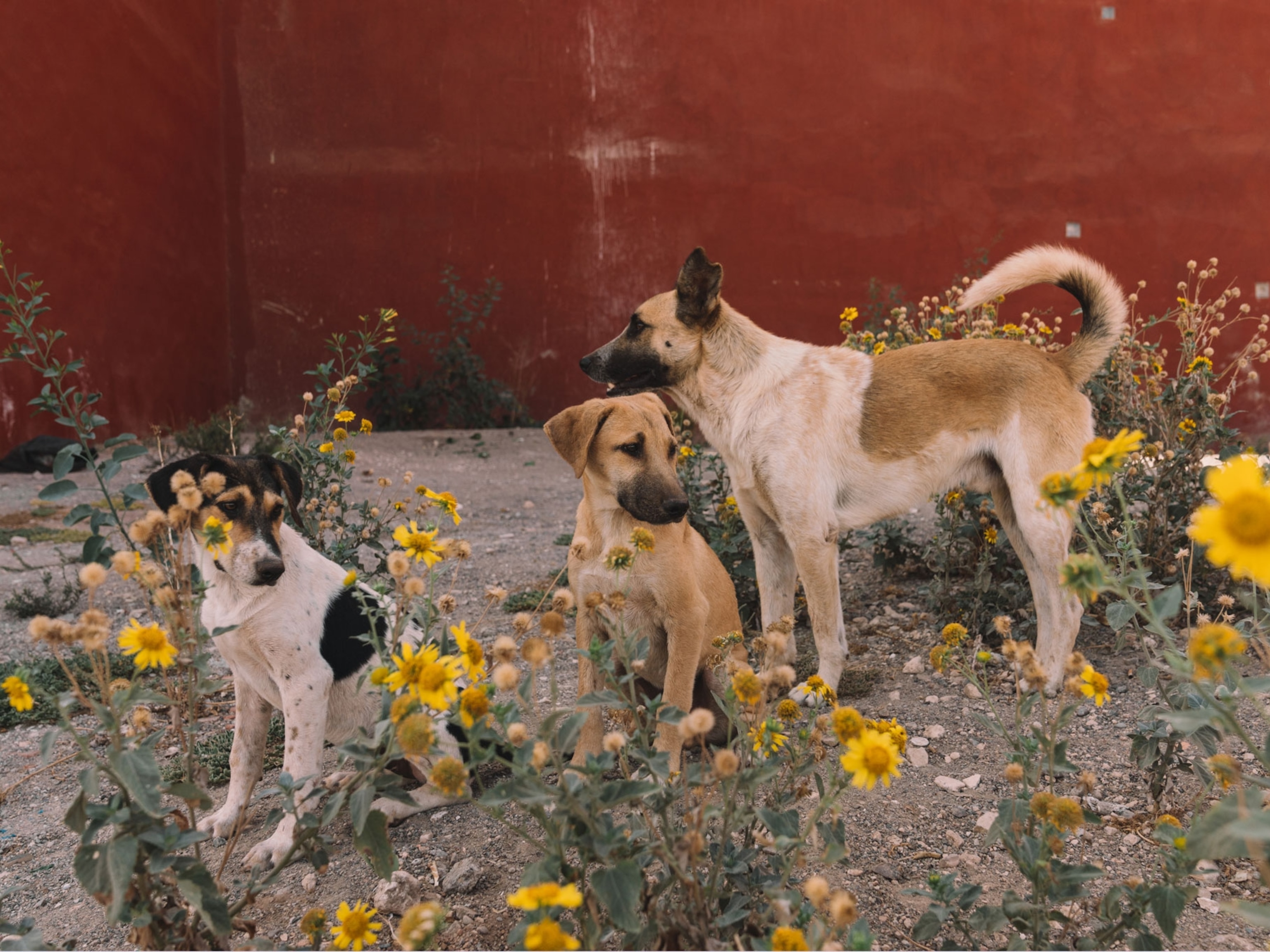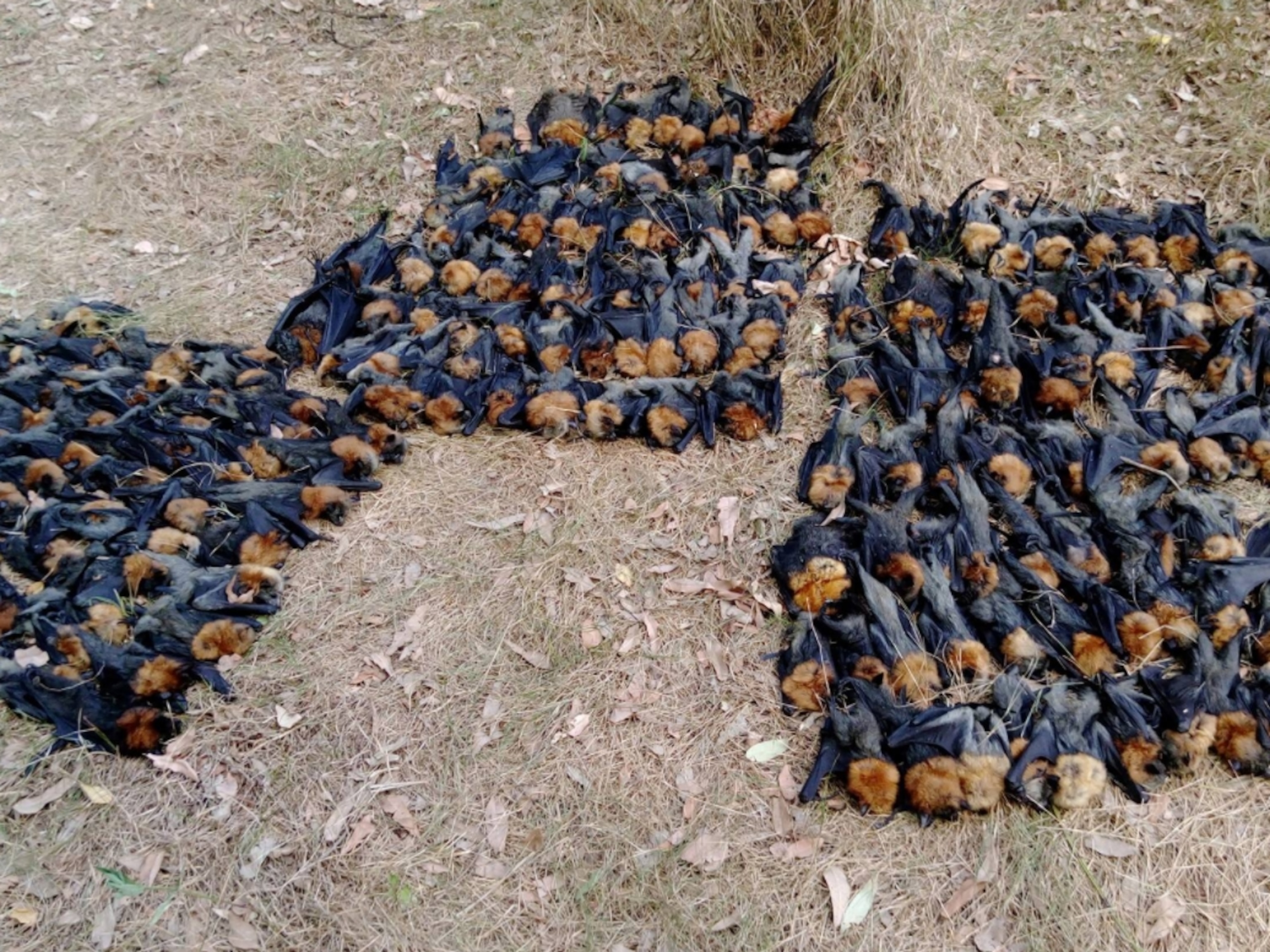It’s best to keep your voice down when strolling through Melbourne’s Yarra Bend Golf Course. The sport requires peace and quiet—as do the 30,000 bats sleeping in the trees that dot the green.
Such large groups of gray-headed flying foxes, a species of fruit-eating megabat that measures 11 inches tall, are no longer uncommon sights in several Australian cities, including Melbourne. Over the past few decades, the expansion of new urban food sources and development in the bats’ rural homes have made cities their main residence.





This migration has been a mixed blessing for flying foxes, which face threats from urban infrastructure such as nets and barbed wire, as well as harassment from residents. But some local advocates, are fighting to help this threatened species.
“We want the bats to be here forever, or however long they choose to be here,” says Stephen Brend, the state park officer in charge of monitoring the Yarra Bend roost. The population is doing well this year, and for that to continue in an increasingly urbanized Australia, both the flying residents and their human neighbors will have to adapt.



Moving to the city
Gray-headed flying foxes have a taste for a range of different pollens and nectars—a trait that makes them essential forest pollinators. But some of their favorite plant species have recently become popular ornamentals in yards and gardens in Australian cities. More and more bats are shifting their roosts from rural areas to cities. Justin Welbergen, an ecologist at Western Sydney University and the president of the Australasian Bat Society, thinks these urban smorgasbords are the main cause.
For wildlife photographer and Melbourne resident Doug Gimesy, who is documenting how the species navigates the city, this migration of bats has essentially eliminated his commute. But most Australians don’t share Gimesy’s excitement. “Having 50,000 flying foxes in your backyard is difficult to deal with,” Welbergen says. They smell, they make noise, and they poop. Their public image is made worse by unfounded fears about the diseases they are thought to spread.

So almost no matter where the bats settle, local residents want them gone. For example, the Melbourne contingent of flying foxes originally chose to roost in the Royal Botanic Gardens in the 1980s. By the 2000s, public animosity towards the bats, combined with the damage they caused to the gardens, forced park employees to usher the bats into Yarra Bend Park instead, where the department could watch over them more closely, Brend says.
Deadly encounters
Park employees can’t protect the bats when they fly off in search of food, however, which is when they really get into trouble. Residents often try to protect the fruit trees in their yards by surrounding them with barbed wire or nets, both of which can have lethal consequences for bats.

Bev Brown has been nursing sick and injured gray-headed flying foxes back to health ever since someone dropped a baby bat off at her house 16 years ago. In 2018, she earned the Order of Australia Medal for her volunteer work. During that time, she’s seen all kinds of bat encounters.
In the summer, she says, eight to 10 bats a day are brought in suffering net-related wounds. Entangled mothers will try and chew off their own wings to get back to their babies. And strings wound too tightly around blood vessels for too long can damage the tissue in a bat’s wing. Brown often tries to help these bats, but sometimes their wing tissue spontaneously declines, and the animal has to be put down. “The worst thing is, those big brown eyes look up at you, and you have to have it euthanized,” Brown says. “I still cry every time.”

Even with these challenges, the Melbourne bats are more fortunate than some. Yarra Bend is a sanctioned home. Elsewhere in Australia, residents can chase the bats from their roosts whenever they like—it’s even legal to shoot them in some areas, like orchards. Still, the bats continue to migrate into cities, attracted by the fruity feasts.
The more you know
Outside city limits, developers are clearing the plants the bats feed on, as rural areas are increasingly converted into farmland and housing developments, or cut down for wood pulp. Welbergen argues that if the destruction continues, there will be fewer and fewer food options for the population, which makes habitat destruction the species’ primary threat.
Global warming puts additional pressure on the flying fox population. During extremely hot days, which are on the rise, the bats can die from heat stress, a condition they signal by clumping together and slowly sliding down tree trunks in a furry mass. If heat waves occur in the spring, while babies are still completely dependent on their mothers, Brend says that could kill almost an entire year’s worth of offspring.
With so many factors working against the bats, its seems the only way to ensure they continue filling the night sky is to better understand their inner workings. More researchers are focusing on flying foxes than ever before, says Welbergen, and their collective results should help craft more evidence-based rescue efforts.

In the meantime, the bats have taught Gimesy, who often travels around the world for work, the value of staying local. As a photographer, he says, “I think we should focus on issues closer to home, because those can have the most impact.”
Brend and Brown, too, will continue caring for the bats and educating the public to help them accept their nocturnal neighbors. One local department store, for example, has agreed to only sell small-weave tree netting that bats can’t get caught in. And Brown visits homes surrounding new roosts to answer residents’ questions and ease their concerns.
“People think they’re flying vermin, but I’ve raised my children with these flying mammals,” Brown says. Brend feels similarly. “People have such negative opinions about bats, and we’re trying to overcome that,” he says.

Related Topics
You May Also Like
Go Further
Animals
- This ‘saber-toothed’ salmon wasn’t quite what we thoughtThis ‘saber-toothed’ salmon wasn’t quite what we thought
- Why this rhino-zebra friendship makes perfect senseWhy this rhino-zebra friendship makes perfect sense
- When did bioluminescence evolve? It’s older than we thought.When did bioluminescence evolve? It’s older than we thought.
- Soy, skim … spider. Are any of these technically milk?Soy, skim … spider. Are any of these technically milk?
- This pristine piece of the Amazon shows nature’s resilienceThis pristine piece of the Amazon shows nature’s resilience
Environment
- This pristine piece of the Amazon shows nature’s resilienceThis pristine piece of the Amazon shows nature’s resilience
- Listen to 30 years of climate change transformed into haunting musicListen to 30 years of climate change transformed into haunting music
- This ancient society tried to stop El Niño—with child sacrificeThis ancient society tried to stop El Niño—with child sacrifice
- U.S. plans to clean its drinking water. What does that mean?U.S. plans to clean its drinking water. What does that mean?
History & Culture
- Séances at the White House? Why these first ladies turned to the occultSéances at the White House? Why these first ladies turned to the occult
- Gambling is everywhere now. When is that a problem?Gambling is everywhere now. When is that a problem?
- Beauty is pain—at least it was in 17th-century SpainBeauty is pain—at least it was in 17th-century Spain
- The real spies who inspired ‘The Ministry of Ungentlemanly Warfare’The real spies who inspired ‘The Ministry of Ungentlemanly Warfare’
- Heard of Zoroastrianism? The religion still has fervent followersHeard of Zoroastrianism? The religion still has fervent followers
Science
- Here's how astronomers found one of the rarest phenomenons in spaceHere's how astronomers found one of the rarest phenomenons in space
- Not an extrovert or introvert? There’s a word for that.Not an extrovert or introvert? There’s a word for that.
- NASA has a plan to clean up space junk—but is going green enough?NASA has a plan to clean up space junk—but is going green enough?
- Soy, skim … spider. Are any of these technically milk?Soy, skim … spider. Are any of these technically milk?
- Can aspirin help protect against colorectal cancers?Can aspirin help protect against colorectal cancers?
Travel
- What it's like to hike the Camino del Mayab in MexicoWhat it's like to hike the Camino del Mayab in Mexico
- Follow in the footsteps of Robin Hood in Sherwood ForestFollow in the footsteps of Robin Hood in Sherwood Forest
- This chef is taking Indian cuisine in a bold new directionThis chef is taking Indian cuisine in a bold new direction
- On the path of Latin America's greatest wildlife migrationOn the path of Latin America's greatest wildlife migration
- Everything you need to know about Everglades National ParkEverything you need to know about Everglades National Park








